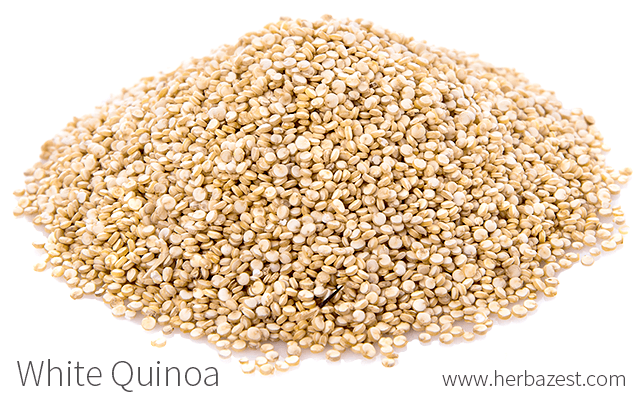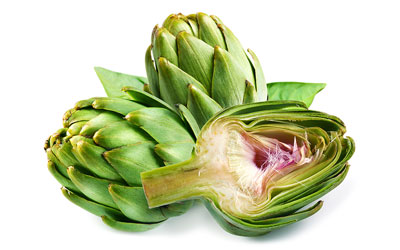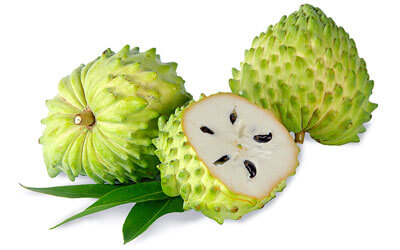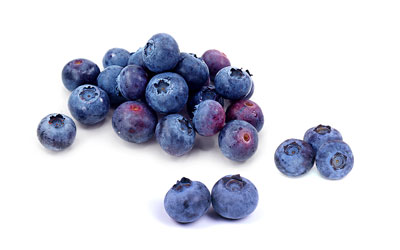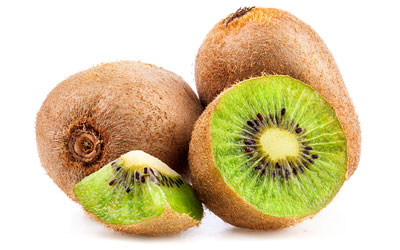Quinoa is a highly nutritious seed that has been cultivated for over 7,000 years in the Andean region of South America.1 It is known for being a great source of protein with all nine essential amino acids. White quinoa is the cheapest and most common variety consumed today, but quinoa's color can be black, gray, yellow, red, purple, or even violet. However, the three varieties of quinoa you are most likely to encounter are red, black, and white.
White Quinoa: Nutrition Facts
White quinoa is actually not really white in color, so it is also referred to as tan, ivory, golden, yellow, or blonde. It has a milder taste than black and red quinoa, and it also has a softer texture when cooked.
The primary difference between white quinoa and other quinoa varieties is that it does not contain betacyanins - the pigments present in red and black quinoa that contribute to their higher phenolic concentration and antioxidant activity. But besides this difference, white quinoa has the same nutritional value as other varieties of quinoa.
White quinoa seeds are a great source of complete protein, as well as complex carbohydrates, unsaturated fat, and many essential vitamins and minerals.
185 GRAMS (1 CUP) OF COOKED QUINOA CONTAIN APPROXIMATELY 8 GRAMS OF PROTEIN.2
Quinoa is considered a high-quality protein source due to the fact that it contains all nine essential amino acids, with especially high levels of lysine, which makes quinoa nutritiously superior to dominant grains, such as wheat.
How to Cook White Quinoa
Cooking white quinoa is very simple and can be accomplished by following these easy steps:
- Combine one cup of rinsed white quinoa in a saucepan with two cups of water.
- Bring to a boil, cover, then reduce heat to low and allow it to simmer until the quinoa is tender (approximately 10 - 15 minutes).
- Drain thoroughly in a fine colander.
Alternatively, you can soak the white quinoa seeds in fresh water for approximately two to three hours or until they are tender.
White Quinoa Health Benefits
Recent research has demonstrated that the consumption of quinoa may be effective in reducing oxidative stress in the blood plasma, as well as the heart, kidney, liver, spleen, lung, testis, and pancreas tissue. An animal study, published in Plant Foods for Human Nutrition (2010), demonstrated that supplementation with quinoa seeds helped to maintain the normal activity of enzymes in rats, as well as decrease oxidative stress and regulate antioxidant enzyme activities.2 Although the study's conclusions highlight the potential of white quinoa as a protective agent against oxidative stress, red and black quinoa have been shown to display even stronger antioxidant actions.
WHETHER BLACK, RED, OR WHITE, QUINOA IS AN IMPORTANT DIETARY SUPPLEMENT FOR PEOPLE WITH CELIAC DISEASE, GLUTEN INTOLERANCE, OR WHEAT ALLERGIES.
Because gluten is one of the most abundant proteins found in food, it is important to note that quinoa is gluten-free. In a study published in The American Journal of Gastroenterology (2014), quinoa was shown to be well-tolerated by celiac patients, thus demonstrating it to be a good alternative to gluten-rich foods, such as wheat.3
There is still much to be learned about the health benefits of quinoa, and more research is necessary. However, it is indisputable that its nutritional profile offers many advantages compared to other grains due to its high-quality protein content and many essential vitamins and minerals. Moreover, white quinoa is easy to prepare and incorporate into any balanced diet.
Sources
- Food and Nutrition Bulletin, A lesser-known grain, Chenopodium quinoa: Review of the chemical composition of its edible parts, 1998
- Food and Nutrition Sciences, Total Phenolic Content and Antioxidant Activity of Red and Yellow Quinoa (Chenopodium quinoa Willd.) Seeds as Affected by Baking and Cooking Conditions, 2012
- Food Chemistry, Characterisation of phenolics, betanins and antioxidant activities in seeds of three Chenopodium quinoa Willd. genotypes, 2015
- Journal of Nutrition and Food Sciences, Quinoa (Chenopodium quinoa Willd), from Nutritional Value to Potential Health Benefits: An Integrative Review, 2016
- Quinoa: The Everyday Superfood
- USDA Nutrient Database, Quinoa, uncooked
Footnotes:
- Harvard T.H Chan. (n.d.). Quinoa. Retrieved October 15, 2021 from https://www.hsph.harvard.edu/nutritionsource/food-features/quinoa/
- Frontiers in Plant Science. (2016). The Global Expansion of Quinoa: Brenda and Limits. Retrieved October 15, 2021 from https://www.frontiersin.org/articles/10.3389/fpls.2016.00622/full
- Plant Foods for Human Nutrition. (2010). Effect of diet supplemented with quinoa seeds on oxidative status in plasma and selected tissues of high fructose-fed rats. Retrieved October 15, 2021 from https://pubmed.ncbi.nlm.nih.gov/20354792/
- American Journal of Gastroenterology. (2014). Gastrointestinal effects of eating quinoa (Chenopodium quinoa Willd.) in celiac patients. Retrieved October 15, 2021 from https://www.semanticscholar.org/paper/Gastrointestinal-Effects-of-Eating-Quinoa-quinoa-in-Zevallos-Herencia/d34f8fb338114746bfe55d9dd61c66a050fbffb1
